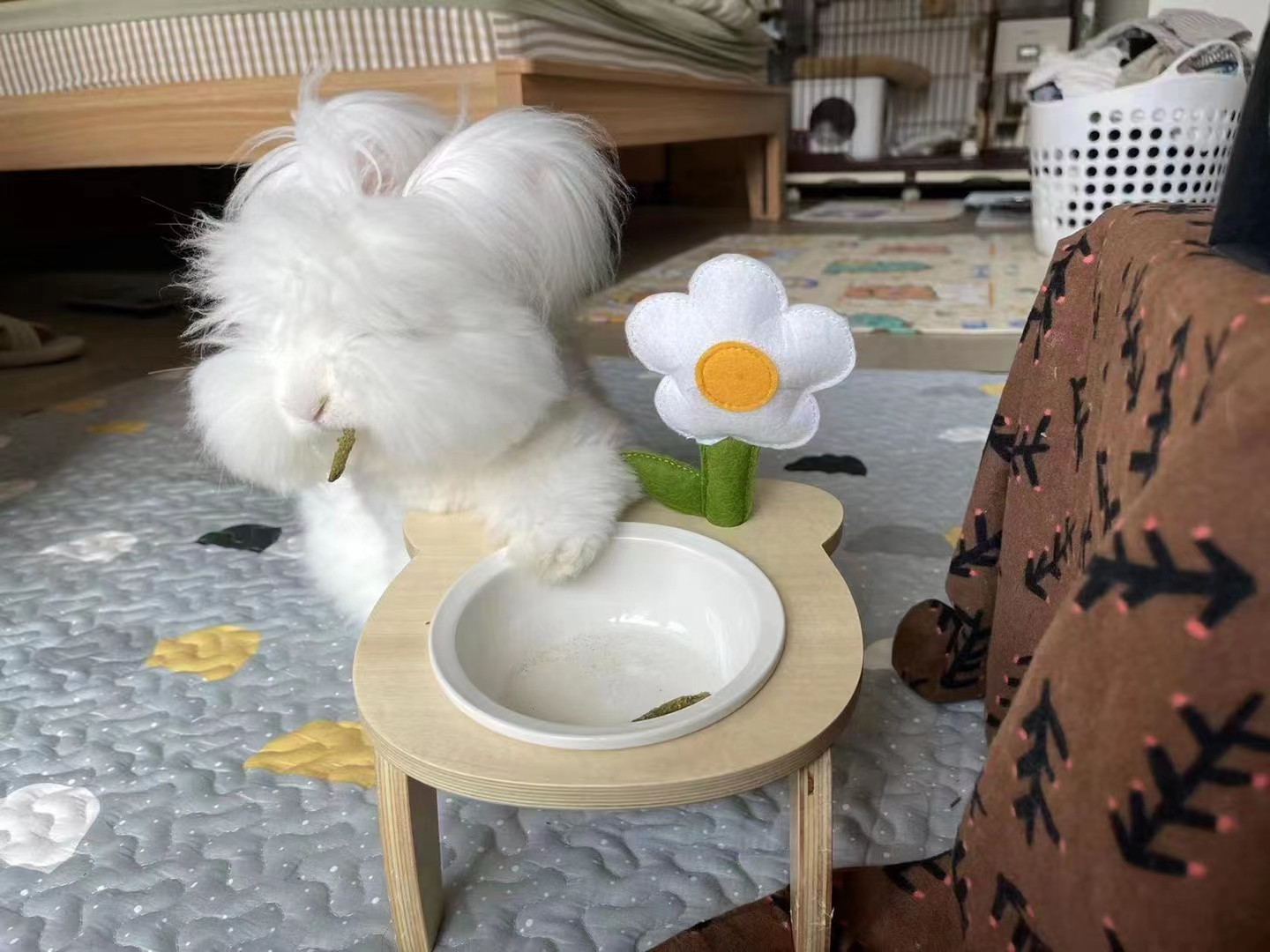

蒙阴长毛兔养殖经验知识讲解
 发布日期:2025-05-14
来源:http://www.myxinhua.com 发布人:创始人
发布日期:2025-05-14
来源:http://www.myxinhua.com 发布人:创始人
长毛兔凭借其高度特化的消化生理机制构建了独特的营养代谢体系:作为单胃草食动物,其消化道长度可达体长15倍,盲肠微生物群落与球囊组织的协同作用使粗纤维消化率达65%-70%,日粮中12%-16%的粗纤维含量既能维持肠道正常蠕动节律(0.8-1.2次/分钟),又可抑制有害菌群增殖(大肠杆菌数量降低2个数量级),而钙磷比耐受范围(1.5:12:1)显著优于常规畜禽的代谢阈值。
Long haired rabbits have constructed a unique nutritional metabolism system based on their highly specialized digestive physiological mechanisms: as a monogastric herbivore, their digestive tract length can reach 15 times body length. The synergistic effect of cecal microbiota and balloon tissue enables a crude fiber digestion rate of 65% -70%. A crude fiber content of 12% -16% in the diet can maintain normal intestinal peristalsis rhythm (0.8-1.2 times/minute) and inhibit the proliferation of harmful bacteria (reducing the number of Escherichia coli by 2 orders of magnitude), while the calcium phosphorus tolerance range (1.5:1 to 2:1) is significantly better than the metabolic threshold of conventional livestock and poultry.
兔毛生长周期遵循双重调控机制:幼兔经历两次年龄性换毛(30-100日龄,二次130-190日龄),成年兔则呈现春秋季节性换毛特征(春季换毛期21-28天,秋季35-42天),病理性脱毛多由营养代谢失衡引发(血清总蛋白<50g/L时脱毛率增加3.8倍)。选育优良个体需关注体躯指数(胸围/体长≥1.1)、毛囊密度(≥800个/cm²)及四肢骨骼强度(掌骨骨密度≥1.2g/cm³)。
The growth cycle of rabbit hair follows a dual regulatory mechanism: young rabbits undergo two age-related hair changes (first 30-100 days old and second 130-190 days old), while adult rabbits exhibit seasonal hair changes in spring and autumn (21-28 days in spring and 35-42 days in autumn). Pathological hair loss is often caused by nutritional metabolism imbalance (hair loss rate increases by 3.8 times when serum total protein<50g/L). Breeding excellent individuals requires attention to body mass index (chest circumference/body length ≥ 1.1), hair follicle density (≥ 800/cm ²), and limb bone strength (metacarpal bone density ≥ 1.2g/cm ³).

饲养管理中,青粗饲料占比需维持体重的20%-25%(干物质基础),采食序列优先选择多叶型牧草(粗蛋白>18%)与根茎类饲料(淀粉含量<25%),其特有的食粪行为可使软粪中VB12吸收率提升37%。剪毛周期优化需平衡毛品质与产量:75天养毛期时特级毛占比达42%(毛长≥6cm),而60天周期虽年产量增加8%,但次级毛比例升55%。剪毛操作需遵循背脊分线法,采用弧形剪刀保持15°切入角度,剪后毛纤维含水率应控制在8%-12%,仓储时需使用双层防潮纸并间隔添加樟脑粉(0.5g/m³)以防止毛鳞片结构受损。
In feeding management, the proportion of green coarse feed needs to maintain 20% -25% of body weight (dry matter basis), and the feeding sequence prioritizes the selection of multi leaf forage (crude protein>18%) and root and stem feed (starch content<25%). Its unique feeding behavior can increase the absorption rate of VB12 in soft manure by 37%. The optimization of shearing cycle requires a balance between wool quality and yield: during the 75 day wool raising period, the proportion of premium wool reaches 42% (wool length ≥ 6cm), while during the 60 day cycle, although the annual yield increases by 8%, the proportion of secondary wool rises to 55%. The shearing operation should follow the spine splitting method, using curved scissors to maintain a 15 ° cutting angle. After shearing, the moisture content of the wool fibers should be controlled at 8% -12%. When storing, double-layer moisture-proof paper should be used and camphor powder (0.5g/m ³) should be added at intervals to prevent damage to the wool scale structure.
本文由蒙阴长毛兔友情奉献.更多有关的知识请点击:http://www.myxinhua.com我们将会对您提出的疑问进行详细的解答,欢迎您登录网站留言.
This article is a friendly contribution from Long haired Rabbit For more information, please click: http://www.myxinhua.com We will provide detailed answers to your questions. You are welcome to log in to our website and leave a message